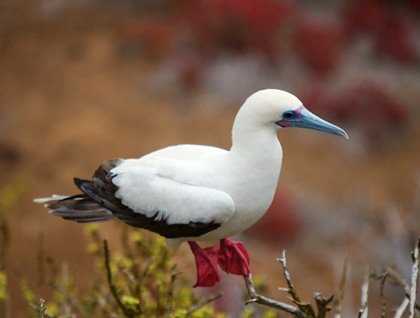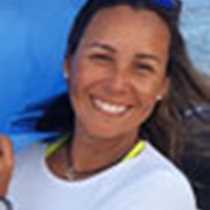Our last full day into our fantastic expedition in the Galapagos brought us to San Cristobal. This is the easternmost island of the archipelago. We dropped anchor just before breakfast at Punta Pitt, a stunning area dominated by tall cliffs which are remnants of ancient tuff cones. It is in this place where we were to find the last species of booby that makes its home in the Galapagos, the red-footed booby. On previous days we had spotted Nazca and blue-footed boobies, but this species prefers the peripheral islands as it tends to forage in pelagic waters. Red-footed boobies build a proper nest on trees or bushes, which are rather scarce as the tall cliffs receive the brunt of the winds in this area. Still, they seemed to abound in this location together with other sea birds like the Galapagos shearwaters, great frigates and swallow-tailed gulls that have made their home in the nearby rocks and islets. We landed at the greenish beach of Punta Pitt, which is mainly composed of tiny volcanic crystals of olivine, known as peridot. We began our ascent along a canyon up to a plateau. The view was simply dramatic with steep walls made out of yellowish palagonite, or tuff rock, all around us. We continued along the trail which was flatter, towards the edge of the coast which is covered by the striking red Galapagos carpet weed. Here, a few red-footed boobies have found their nesting spots, so we could have a closer look at them. We then returned back to our landing beach to spend a little time with some resting Galapagos sea lions and simply relax in this quiet and peaceful spot.
In the afternoon, we navigated further south in order to reach Leon Dormido, or “Kicker Rock,” off the western coast of San Cristobal. From a distance this rock resembles the shape of a “sleeping” lion, hence its Spanish name. It gets its alternate nickname because to others it resembles the shape of a boot. Leon Dormido is a tall, pale rock, which is actually the tip of a large submarine volcano. There is no landing site here and it is classified by the Galapagos National Park as a marine site, so we set off in our Zodiacs to explore the underwater world of this rock. The waters are deep and sometimes slightly choppy, but the place is an explosion of marine life. There were huge schools of fish at the bottom and we were able to spot Pacific green sea turtles, a spotted eagle ray, Galapagos sharks and even hammerhead sharks! With excellent conditions, this was really an amazing place!! Once all groups were back on board, we began a circumnavigation around Leon Dormido to enjoy views of this majestic place. We observed the many seabirds that inhabit it and enjoyed one more sunset in these warm latitudes surrounded by blue seas.
This week was full of fascinating experiences, landscapes and creatures. Tomorrow we will leave for the mainland to return back to our ‘normal lives,’ but we are certain that we have fallen under the magic spell of the Enchanted Isles.







